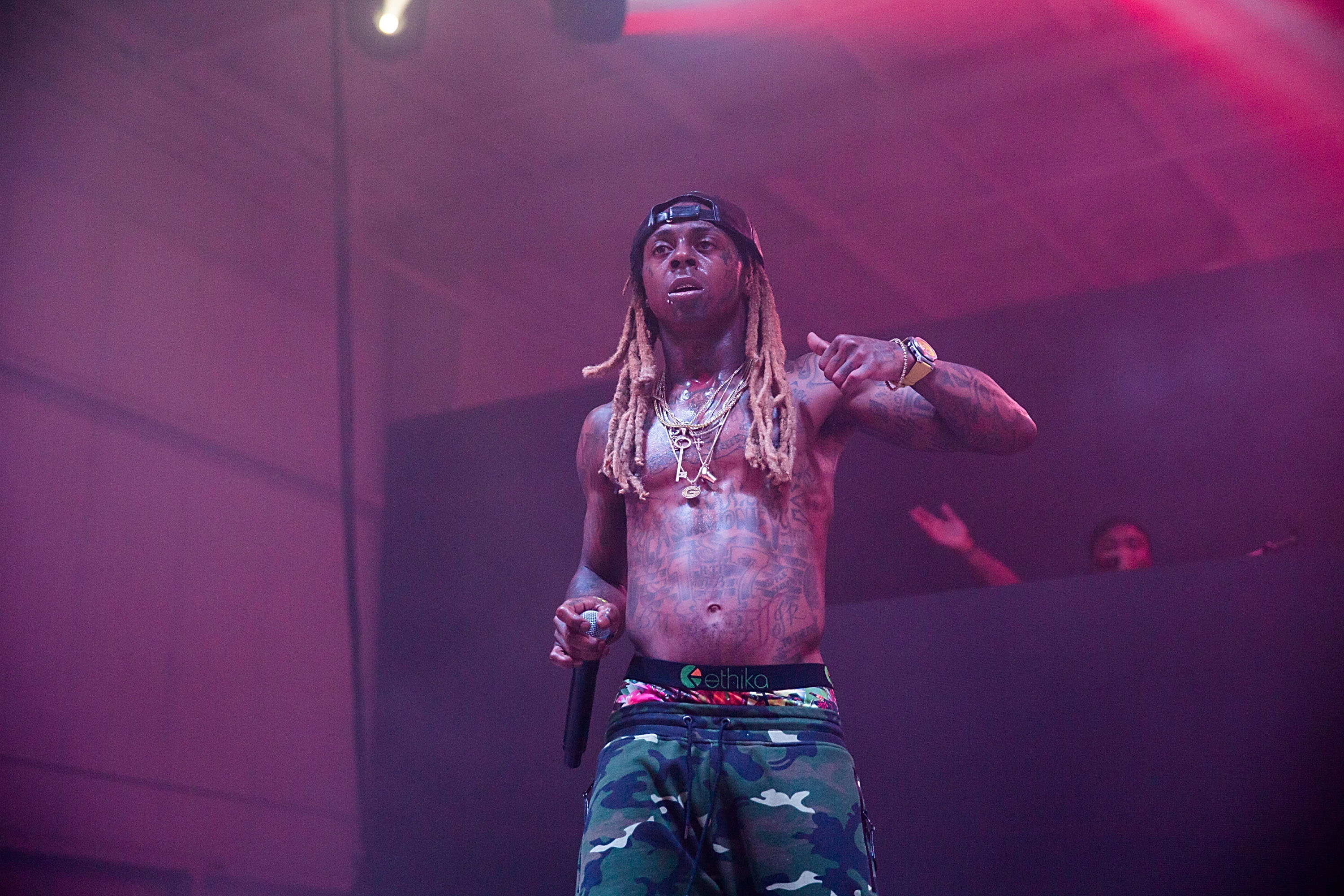Storytelling in rap is not exactly a lost art. While most rap songs contain anecdotal or specific chronicles interspersed in their rhymes, “story” raps are a distinct sub-genre where an artist can tell a focused piece of fiction. It was only a few weeks ago that Eminem, an artist who always mixes narratives into his rhymes, released his Kamikaze album, and recently Noname captured critical acclaim for her poetic, vivid story structure in song on her new album Room 25. And on Lil Wayne‘s Tha Carter V, his incredibly long-awaited opus that was finally released earlier today, Wayne joins forces with Kendrick Lamar to tell a weird, problematic, but also fascinating story of deceit and lust on “Mona Lisa.”
Wayne doesn’t get enough credit for being smart. His cleverness is often appreciated almost as a magic trick, instead of the working of a man who thinks about things and how to create double or triple meanings out of simple words, phrases, and pop culture references. Here, the title “Mona Lisa” refers to a deceitful character in the story. She’s a beautiful type that a rich man might try to impress at a nightclub, but she’s secretly setting him up to be robbed or murdered. Of course, the Mona Lisa of the iconic da Vinci painting is similarly withholding of her intentions, with that ambiguous smile that is both warm and untrustworthy. Also, Wayne and Kendrick are “painting a picture” with their lurid dramatization, straight out of those urban romance novellas found in the black section of your local bookstore.
Wayne plays the gangster alpha, stretching and contorting his naturally croaking voice to warn you about the woman’s plans. Kendrick purposefully plays a blubbering mess, a pathetic and weak innocent whose delivery gets so intense it sounds like he’s on the verge of tears. In character, he begs for affection from a woman he thinks belongs to him, but who’s actually “fucking with” rappers like Wayne and Kendrick. (Not the same woman from Wayne’s verse—it’s a little confusing.) “Tell me who love you, I bet I love harder/ Forgot all the shit that I did for your daughter? / The pampers, the Pedialyte, and my momma daycare after school, and she never did charge her,” he screams. Eventually, he finds resolution in killing himself. It’s a wild, mesmerizing tale that’s as bewildering as those aforementioned urban romance novellas.
“Mona Lisa” is entertaining, both purposefully and in spite of itself. It’s not exactly self-aware of the things it thinks it’s self-aware about, telling an apropos story for the #MeToo age about men’s sense of entitlement over women, but perhaps doing so accidentally. Wayne’s and Kendrick’s tales poke at a very male-specific fear of backstabbing and gold-digging women, while incidentally also displaying how men can wield their power to control, emotionally abuse, and disregard the agency of the women they supposedly love. Despite its problems, it’s an engaging tale, and fun to listen to, combining the technical acumen of Outkast’s “Da Art of Storytelling” with the strange thrills of the Notorious B.I.G.’s “I Got A Story To Tell.” Wayne and Kendrick clearly bring out each other’s skills. And on “Mona Lisa,” regardless of their intent, they relate a tale more potent than it seems on its surface.





